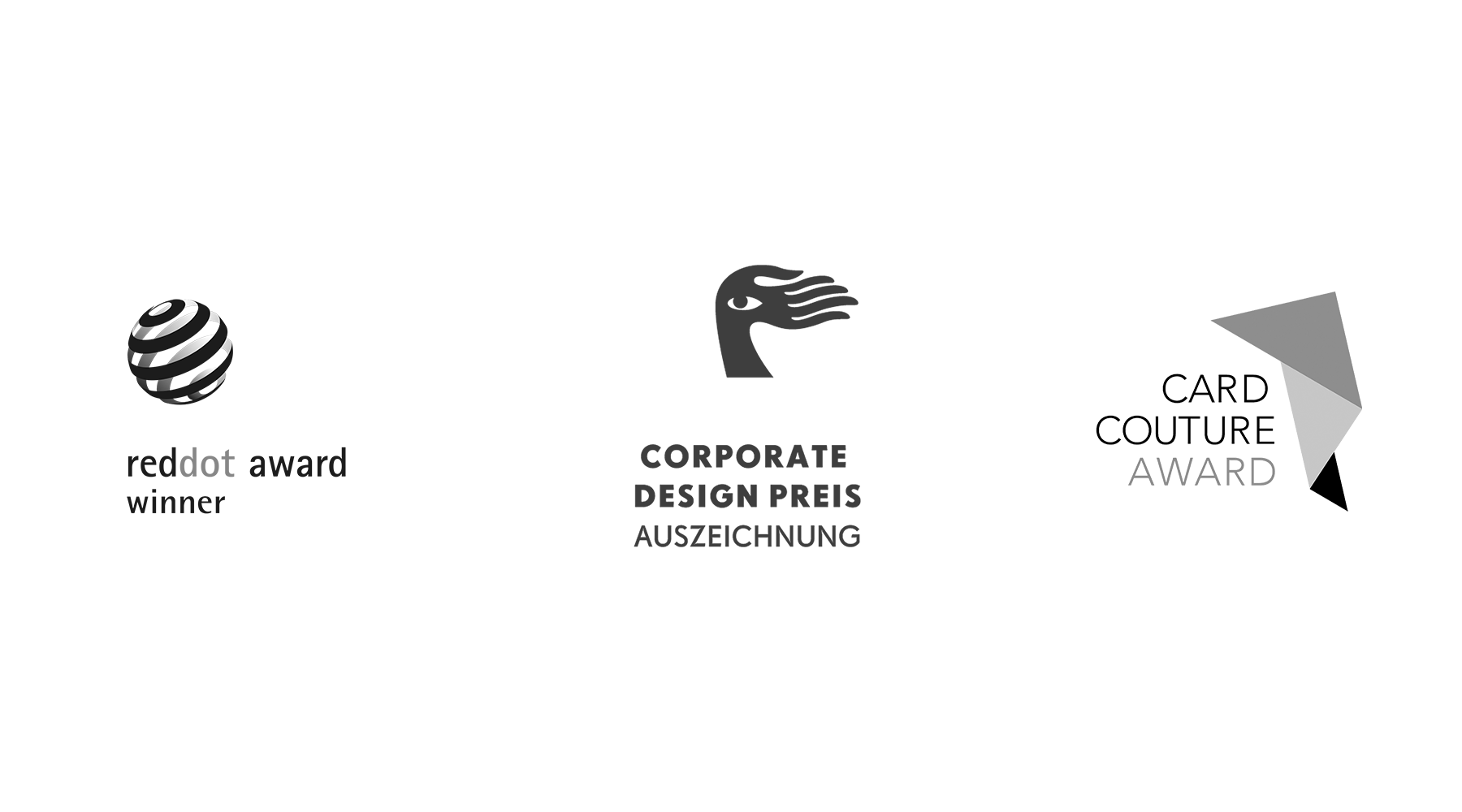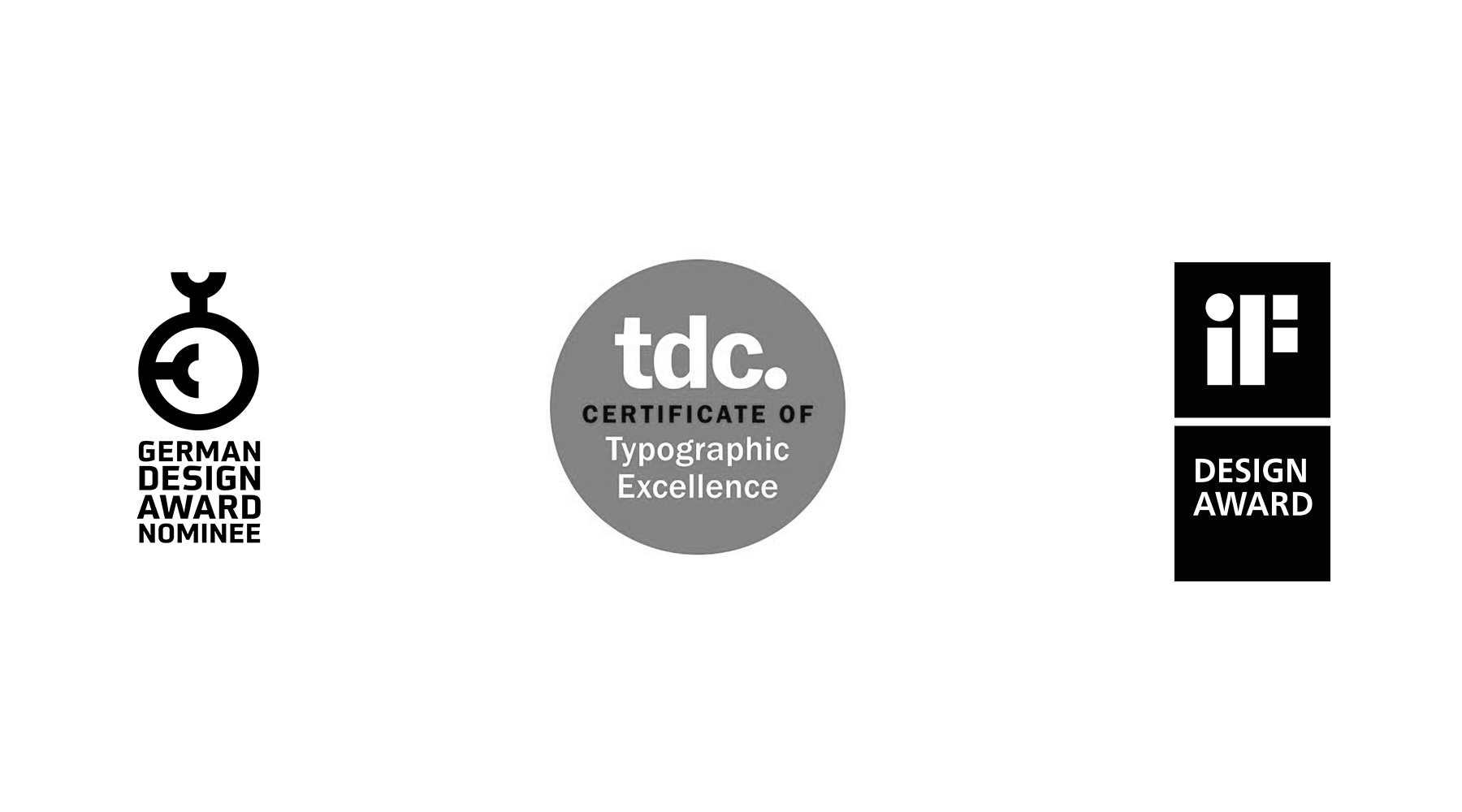Brand Design
Identität als Startpunkt
Gutes Brand Design ist eine Übersetzung aus der Persönlichkeit und Charakteristika einer Marke – der Brand Identity – in ein System visueller Gestaltung. Es ist also nicht geprägt von Trends und persönlichem Gusto, sondern Ausdruck und damit selbst Bestandteil der Marke. Nur dadurch wird es:
- eigenständig. Das Design hat klare Bezugspunkte, die markenindividuell sind. Das schafft die Basis für individuelle, besondere Gestaltung, die sich nicht nur an äußerem orientiert.
- langlebig. Design, das sich an kontemporären Erscheinungsbildern orientiert, ist selbst auf das Ende des Trends datiert. Die Orientierung nach innen schafft Widerstandsfähigkeit und Brand Design mit universaler Gültigkeit.
- identitätsstiftend. Gutes Brand Design repräsentiert die Marke und ihre positiven Eigenschaften auf einer direkten Wahrnehmungsebene nach außen. Das schafft einen starken gemeinsamen Nenner, der auch ins Unternehmen zurückstrahlt und für gemeinsames Markenverständnis sorgt.
Ein starkes System
Marken agieren heute multimodal, Design muss über diverse Touchpoints hinweg von verschiedensten Akteuren verstanden, gelebt und angewendet werden können – von technischen Dienstleistern in der Webentwicklung, Fotografen, Redakteuren in der PR-Arbeit oder Unternehmensanwendern in Arbeitsdokumenten und Präsentationen. Dieser Sachverhalt fordert auch ganz neue Anforderungen an Designsysteme.
- Gutes Brand Design ist zugänglich. Strikte Regelwerke incentivieren nicht für eine lebendige Anwendung. Designsysteme müssen neben klar verständlichen und anwendergerechten Spielregeln und Vorlagen vor allem auch Freiräume schaffen, Optionen und Vielfalt aufzeigen, Kreativität anregen. Nur mit echter Befähigung kann auch echte Bereitschaft entstehen.
- Gutes Brand Design ist modular. Visuelle Gestaltung findet heute auf diversen Ebenen und Kanälen statt – Digital, Messe, Print, Social Media. Fast täglich kommt mehr Varianz hinzu – starre Regeln sind im Detail nicht mehr zielführend. Design muss stattdessen in Inhaltstypen denken, in Modulen und Bausteinen, die sich je nach Bedarf immer wieder neu arrangieren können und im Zusammenspiel die Marke repräsentieren.
- Gutes Brand Design ist zukunftsfähig. Wenn Designsysteme ein festes Fundament haben, das Regeln unabhängig von der konkreten Ausspielung definiert, lassen sich auf dieser Basis auch immer wieder neue Anwendungen, Typen, Module entwickeln, skalieren. Das Brand Design hat das Potential sich immer wieder und permanent aus sich selbst heraus zu erneuern – das schafft maximale Nachhaltigkeit.
Gutes Brand Design wird im ganzen Unternehmen gelebt und dadurch permanenter Ausdruck von Markenidentität. Das schafft Identifikation und einen echten Wirkungsgrad in der Wertschöpfung.
Prozess
„Wir haben ja schon eine Gestaltung, jetzt alles umzuwerfen ist sicher ein langwieriger Prozess – nur damit alles etwas schöner aussieht.“
Sicher, kein Designprozess geht spurlos an einem Unternehmen vorüber. Und genau das ist in der längeren Betrachtung auch wichtig. Denn schlecht funktionierende Gestaltungssysteme binden Potential, machen die Markenkommunikation nach außen inkonsistent und schwach, nach innen aufwendig, weil ohne klare Orientierung vieles immer wieder neu gedacht, entwickelt und gestaltet wird. Hier liegen die echten Budgetfresser. Wir legen den Finger auf die Wunde, um langfristig zu befähigen, effizient und wirkstark zu machen. Unseren Prozess können wir genau an die konkreten Bedarfe anpassen und durch eine besondere Methodik auf Auftraggeberseite ressourcenarm gestalten. Here we go!
- 01 Framing
Manchmal beginnt der visuelle Prozess bei null, in anderen Fällen existiert schon eine gewachsene Markenvisualität. Wir schauen gemeinsam, wo die größten Schmerzpunkte und Defizite liegen, was neue Anforderungen und Zielsetzungen sind, was erhalten werden kann und muss. Wir identifizieren Ihre größten Potentiale in der Designanwendung, die ‚Tipping Points‘ und finden eine sinnvolle Definitionsmenge.
- 02 Projektion
Für die Entwicklung eines soliden Brand Design bedarf es einer starken inhaltlichen Grundlage. Im Idealfall existiert bereits eine gut differenzierte Corporate Identity (LINK), die sich in gestalterische Attribute übersetzen lässt. Wir definieren inhaltliche Design-Routen mit unterschiedlichen Schwerpunkten, die als valides Grundgerüst in der Entwicklung und wichtige Referenz in der späteren Entscheidungsfindung dienen.
- 03 Entwicklung
Nun folgt der eigentliche Kreationsprozess. Auf Basis einer klaren Vordefinition bedarf es hier meist wenig Iteration, so entstehen reibungsarme, schlanke Prozesse für unsere Auftraggeber. Vor allem, da wir Gestaltungsentwürfe nie im leeren Raum entwickeln und präsentieren. Logos und Farben müssen immer als Teil eines angewendeten Systems betrachtet werden, in denen auch Schrift und Bilder, Bewegung und Interaktion, Medien und Kanäle eine Rolle spielen. Das macht das spätere Markenbild schon vor der Entscheidung verständlich und erlebbar und schafft Sicherheit in den Folgeprozessen.
- 04 System
Diese Phase beschreibt die Überführung des ausgewählten Systems in ein Regel- und Anschauungswerk, das die Markengestaltung Anwendern aller Ebenen zugänglich macht. Das kann zunächst sehr rudimentär erfolgen oder in sehr umfänglichen Ausprägungen, mit vielen medialen Beispielanwendungen und breiten Definitionsmengen. Gemeinsam definieren wir, welche Lösung sinnvoll und angemessen ist.
ADD-ON: Ein digitales Manual kann eine tolle Ergänzung und wichtige Grundlage für zeitgemäße Designverständnis und Markenanwendung sein. Aktualität, zentrale Verfügbarkeit und zusätzliche Downloads als niedrigschwelliger Startpunkt in der Medienentwicklung sind nur wenige der zahlreichen Vorteile. Kommen Sie auf uns zu, wir beraten Sie gerne zum Digital Design Guide.
Warum wir?


Erfahrung und Commitment
Die Entwicklung von Brand Design und Design Systemen ist bei uns nicht Ausnahme, sondern Daily Business – Häufig beginnt die Zusammenarbeit dabei schon in der frühen Definitionsphase. Unser Anspruch ist die authentische Überführung, das Erhalten von besonderen Markeninhalten in visueller Gestaltung und die Schaffung von hochfunktionalen Systemen, die in die breite und dauerhafte Anwendung kommen.
Wir sind stolz auf wertschätzende Auszeichnungen aber vor allem auf die tollen Ergebnisse in den Projekten. Wir entwickeln und beraten mit Leidenschaft und gehen gerne die Extrameile.